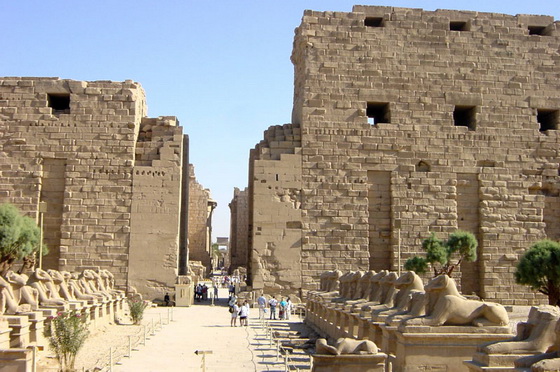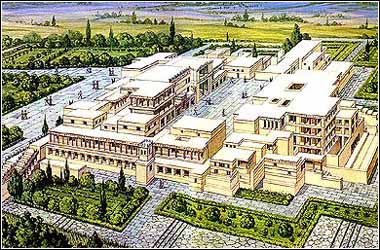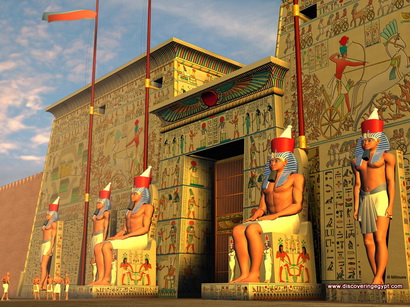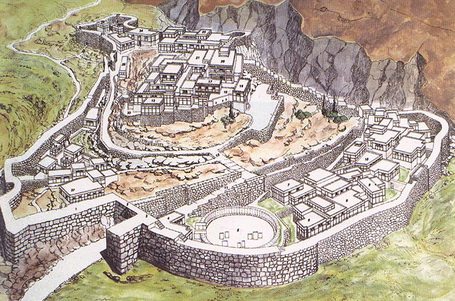| Author |
Message |
|
C. Garzon
Location: USA- Southern Realm Joined: 05 May 2013
Posts: 3
|
 Posted: Sun 05 May, 2013 9:14 pm Post subject: What does an actual Ancient Bronze Sword look like? Posted: Sun 05 May, 2013 9:14 pm Post subject: What does an actual Ancient Bronze Sword look like? |
 |
|
So, to start off of, about me... I'm going into 3d modeling, I'm not really a metalworking genius unless you call making flaky aluminum nuggets something noteworthy ;-). Recently I taken one a small project about making a castle town, and a black-smith happens to be one of the buildings I'm going to be making.
I was considering making some bronze swords for to be hung up on the smithing room, and at the same time I was kind-of learning how to texture objects so they would look like metal. So, I did some research and I found very few bronzy-looking swords, most of the bronze swords I've seen could pass for steel -- just by looking at them on a picture (I know if I held them in my hand I could tell apart). I have not sword enthusiast friends and don't have the money pay for an actual sword, so I don't what the color of the sword metal actually is.
Here's what I've found mostly from pictures-- Neil Burridge website (as he states he works specifically 12% Tin/Copper Bronze
I've looked about EVERYWHERE for bronze swords for sale (so I could use their pictures as sample images) and here's mostly what I've found.


Here are the few bronze (red-goldish looking swords I've seen)



So, my question what do freshly smithed Bronze actually look like "Silvery" like the pictures above or more Golden like below?
The swords made from Neil Burridge (and not the swords swords he said he was selling on the website) were about the only golden looking swords I've seen... everywhere else I've seen more silvery looking swords.
--If you feel like it... post pictures of your own... or show me some links.
Your answer or help is much appreciated 
|
|
  |
 |
David McElrea

|
 Posted: Sun 05 May, 2013 10:35 pm Post subject: Posted: Sun 05 May, 2013 10:35 pm Post subject: |
 |
|
I have a few bronze pieces, including some items from Neil. They are very clearly bronze in real life, bu tend to look silvery in photos. In real life you would want to go with a golden type hue.
However, I can't help but note that these swords would be anachronistic in a medieval setting-- some of them would be from ca. two thousand years before the advent of the medieval castle. If you're wanting to teach people about the middle ages, you'll want a smith's shop that produces items and weapons in iron and steel...
|
|
  |
 |
|
Gregory J. Liebau
Location: Dinuba, CA Joined: 27 Nov 2004
Posts: 669
|
 Posted: Sun 05 May, 2013 10:41 pm Post subject: Posted: Sun 05 May, 2013 10:41 pm Post subject: |
 |
|
It depends on the level of finish applied to a sword, and the alloy of the metal used to craft it. As long as the swords above were cast with historically accurate contents of copper and any other metals involved in the alloy and then finished and polished with accurate technology and tools, then real, historical bronze swords probably looked like those examples, at least a number of times.
Depending on the year and the location, as well as upon numerous social and cultural factors (e.g. the quality of copper used, known smelting techniques, personal experience and style), it's reasonable to suggest that during the bronze age almost every man who made swords would have done so with slight variance from one another, and that even among their own products many swords would exhibit unique features.
This would be true of its material, constructive and aesthetic qualities.
-Gregory
|
|
  |
 |
Dan Howard

|
 Posted: Mon 06 May, 2013 12:19 am Post subject: Posted: Mon 06 May, 2013 12:19 am Post subject: |
 |
|
|
You can't judge colour by a photo; you need to see the actual item. As soon as you take a photo, the colour is corrupted by the lighting, camera settings, and jpeg compression. When these are viewed on a computer screen, the colour is further corrupted by the monitor specs and the settings on the video card.
|
|
  |
 |
William M

|
 Posted: Mon 06 May, 2013 3:07 am Post subject: Posted: Mon 06 May, 2013 3:07 am Post subject: |
 |
|
|
Bronze will naturally darken up to a point due to oxidation with the air. I think that there is a massive amount of colour that can be introduced by the amount of reflection from the sky on the sword.
|
|
   |
 |
|
C. Garzon
Location: USA- Southern Realm Joined: 05 May 2013
Posts: 3
|
 Posted: Mon 06 May, 2013 6:13 am Post subject: Posted: Mon 06 May, 2013 6:13 am Post subject: |
 |
|
| David McElrea wrote: |
However, I can't help but note that these swords would be anachronistic in a medieval setting-- some of them would be from ca. two thousand years before the advent of the medieval castle. If you're wanting to teach people about the middle ages, you'll want a smith's shop that produces items and weapons in iron and steel... |
Oh, I know. Some these swords were really used by Celtic savages (or other primitive cultures) that knew nothing of castle walls and much less square Victorian era houses.
I doubt they've heard of Hobs, Hobbits, werewolfs, and Valvarines!
This is my own fantasy art featuring early era swords and late era swords combined like a video game would. It's elements are combined from Fable (a game for those who don't know it), Lord Of the Rings, and Some faint western themes.
But, I may contruct a realistic scene with actual historically/chronologically accurate (or what's known to be accurate) elements.
-if you want....may want it as background art or something... It'll take a while though... I'm still learning.
| Quote: |
You can't judge colour by a photo; you need to see the actual item. As soon as you take a photo, the colour is corrupted by the lighting, camera settings, and jpeg compression. When these are viewed on a computer screen, the colour is further corrupted by the monitor specs and the settings on the video card. |
-ah but I'll have to make do I don't have any friends, or know of any museum that has Bronze replicas... Or non-aged replicas.
I also don't have 280$ to spend on the blade alone--- that wouldn't be better spent on food, school, car, and etc.
THANKS for all the replies. 
|
|
  |
 |
Dan Howard

|
 Posted: Mon 06 May, 2013 7:02 am Post subject: Posted: Mon 06 May, 2013 7:02 am Post subject: |
 |
|
| C. Garzon wrote: | | Oh, I know. Some these swords were really used by Celtic savages (or other primitive cultures) that knew nothing of castle walls |
Nothing of castle walls?
 Attachment: 105.37 KB Attachment: 105.37 KB

 Attachment: 45.84 KB Attachment: 45.84 KB

 Attachment: 94.16 KB Attachment: 94.16 KB

 Attachment: 104.94 KB Attachment: 104.94 KB

 Attachment: 54.12 KB Attachment: 54.12 KB

|
|
  |
 |
|
Josh Maxwell
|
 Posted: Mon 06 May, 2013 5:57 pm Post subject: Posted: Mon 06 May, 2013 5:57 pm Post subject: |
 |
|
|
"Savages" and "primitive" are strong words to be slinging around.
|
|
  |
 |
|
C. Garzon
Location: USA- Southern Realm Joined: 05 May 2013
Posts: 3
|
 Posted: Mon 06 May, 2013 8:24 pm Post subject: Posted: Mon 06 May, 2013 8:24 pm Post subject: |
 |
|
| Dan Howard wrote: | | C. Garzon wrote: | | Oh, I know. Some these swords were really used by Celtic savages (or other primitive cultures) that knew nothing of castle walls |
Nothing of castle walls? |
Ah, I forgot about the Egyptians, Persians, and Greeks?... Don't think the Romans were around during the bronze era... Greeks and Egyptians I think were late in era I believe in the first place. Celts have have been a around a long time.... they stayed fairly tribal throughout history and hung on to bronze for longer than the Greeks and Egyptians. When i said savage Celts I was merely remembering Romans thought of them.
Those are excellent pictures by the was of the Greek town.
Yes primitive compared to more recent times like the rennaisance and even more so than modern times--- which will hopefully be seen as primitive in the future (we still squabble over silly things like race, religion, and world hunger).- I hope. The building techniques and technology has changed from the Greeks to the Medieval periods.
That's merely what I was saying.
|
|
  |
 |
|
William P
|
 Posted: Sun 12 May, 2013 4:29 am Post subject: Posted: Sun 12 May, 2013 4:29 am Post subject: |
 |
|
http://www.youtube.com/watch?v=iWjtRFNSl2s
Celtic hillforts are not as 'sophisticated' as medieval castles but they were definitely very sturdy. and they are VERY ancient
|
|
   |
 |
Harry Marinakis

|
 Posted: Sun 12 May, 2013 6:40 am Post subject: Posted: Sun 12 May, 2013 6:40 am Post subject: |
 |
|
| Dan Howard wrote: | | You can't judge colour by a photo; you need to see the actual item. As soon as you take a photo, the colour is corrupted by the lighting, camera settings, and jpeg compression. When these are viewed on a computer screen, the colour is further corrupted by the monitor specs and the settings on the video card. |
A screen calibration program helps to control for erroneouos color representation on your computer screen. Many computers have such a calibration program available through the Control Panel.
And a little bit of Photoshop color balancing helps to match the displayed color to the actual color.
I use bright, daylight-balanced lamps to illuminate the item and hold it near the computer screen. Then I use the color balance controls to match colors between the real item and the image in Photoshop.
However, I consistently have trouble matching tone and saturation. Fiddling with the brightness/contrast and saturation controls is useful, but it's almost impossible to get a perfect match.
The other option is shoot your images in RAW format and include a white balance card in the photo (such as the WhiBal card). Then in Photoshop it's easy to correct the colors with one click (if you have the RAW processor included in your version of Photoshop). But you still have to deal with the tone and saturation issues.
http://www.whibalhost.com/_Tutorials/WhiBal/01/
Firesteel Designs
Hand-crafted good lovingly infused with hemoglobin
|
|
  |
 |
Mikko Kuusirati

|
 Posted: Sun 12 May, 2013 7:36 am Post subject: Posted: Sun 12 May, 2013 7:36 am Post subject: |
 |
|
| Harry Marinakis wrote: | | Dan Howard wrote: | | You can't judge colour by a photo; you need to see the actual item. As soon as you take a photo, the colour is corrupted by the lighting, camera settings, and jpeg compression. When these are viewed on a computer screen, the colour is further corrupted by the monitor specs and the settings on the video card. |
A screen calibration program helps to control for erroneouos color representation on your computer screen. Many computers have such a calibration program available through the Control Panel. |
In theory, yes. In practice you need a dedicated hardware/software package and a bit of expertise to properly calibrate a screen.
Of course, this does nothing to the distortion produced by the shooting conditions, camera settings and the quirks inherent in photography itself (the human eye perceives light and color, and especially strong contrasts, quite differently from any camera).
| Quote: | | And a little bit of Photoshop color balancing helps to match the displayed color to the actual color. |
...but, in practice, only when viewed on a system calibrated to match your's.
I've done professional photography, and believe me, life-like colors are a surprisingly fluid concept and ultimately nothing more than an unattainable ideal.
"And sin, young man, is when you treat people like things. Including yourself. That's what sin is."
— Terry Pratchett, Carpe Jugulum
|
|
  |
 |
Mikko Kuusirati

|
 Posted: Sun 12 May, 2013 7:48 am Post subject: Re: What does an actual Ancient Bronze Sword look like? Posted: Sun 12 May, 2013 7:48 am Post subject: Re: What does an actual Ancient Bronze Sword look like? |
 |
|
Note that the Neil Burridge swords in the first post are shot under the open sky - they're reflecting half a world's worth of pure radiant blue, masking the metal's own color. Most studio shoots will have a similar issue due to the bright lights used in product photography.
(Also note how in the top photo you can actually see the photographer's mirror image along the blade's lower edge, and how crisp it is apart from the distortion produced by the blade's shape. Shiny metal is a right bitch to photograph.  ) )
"And sin, young man, is when you treat people like things. Including yourself. That's what sin is."
— Terry Pratchett, Carpe Jugulum
|
|
  |
 |
Peter Anderson

Location: Holland, USA Joined: 22 Mar 2013
Posts: 38
|
 Posted: Sun 12 May, 2013 12:12 pm Post subject: Posted: Sun 12 May, 2013 12:12 pm Post subject: |
 |
|
All colour is relative. Looking at white objects on a white background is a great way to understand this. There are also various optical illusions regarding colour that illustrate this pretty well.
As I recall, I found at some point an article in a Modern Language Review (from the 50s, mind you) on how colour words in Anglo-Saxon Old English referred to brightness and lighting as much as or generally more than the actual hue.
Ah... right here: http://www.jstor.org/discover/10.2307/3718566...2206108351
Of course this is a little off topic. But the important part is that it is very hard to identify a "true" bronze colour because it will always change in regard to its surroundings. Matching colour from screen to object is simply trying to match the photo's lighting to the current lighting (of your computer screen itself, in this case).
So this is of course relevant in that, while trying to simulate a bronze sword, it might benefit you to find a colour that looks like the idea of bronze. Sometimes one has to leave realism for reality, and make one's art a little less literal. And on the other hand, if you want to make something which is thoroughly accurate, then you'll have to figure out what bronze would look like in those conditions (hung on a wall, inside, with only torch, candle, or forge for interior lighting).
Short version: there isn't a single "actual" bronze colour. Fake it, or find the relative colour for your situation! 
|
|
  |
 |
Mikko Kuusirati

|
 Posted: Sun 12 May, 2013 12:16 pm Post subject: Posted: Sun 12 May, 2013 12:16 pm Post subject: |
 |
|
One thing to keep in mind is that Bronze Age mirrors were also made of polished bronze... and what color is a mirror? 
"And sin, young man, is when you treat people like things. Including yourself. That's what sin is."
— Terry Pratchett, Carpe Jugulum
|
|
  |
 |
Peter Anderson

Location: Holland, USA Joined: 22 Mar 2013
Posts: 38
|
 Posted: Sun 12 May, 2013 12:37 pm Post subject: Posted: Sun 12 May, 2013 12:37 pm Post subject: |
 |
|
| Mikko Kuusirati wrote: | ...what color is a mirror?  |
Shiny enough to see yourself in. 
|
|
  |
 |
|
|
You cannot post new topics in this forum
You cannot reply to topics in this forum
You cannot edit your posts in this forum
You cannot delete your posts in this forum
You cannot vote in polls in this forum
You cannot attach files in this forum
You can download files in this forum
|
All contents © Copyright 2003-2024 myArmoury.com — All rights reserved
Discussion forums powered by phpBB © The phpBB Group
Switch to the Basic Low-bandwidth Version of the forum
|

